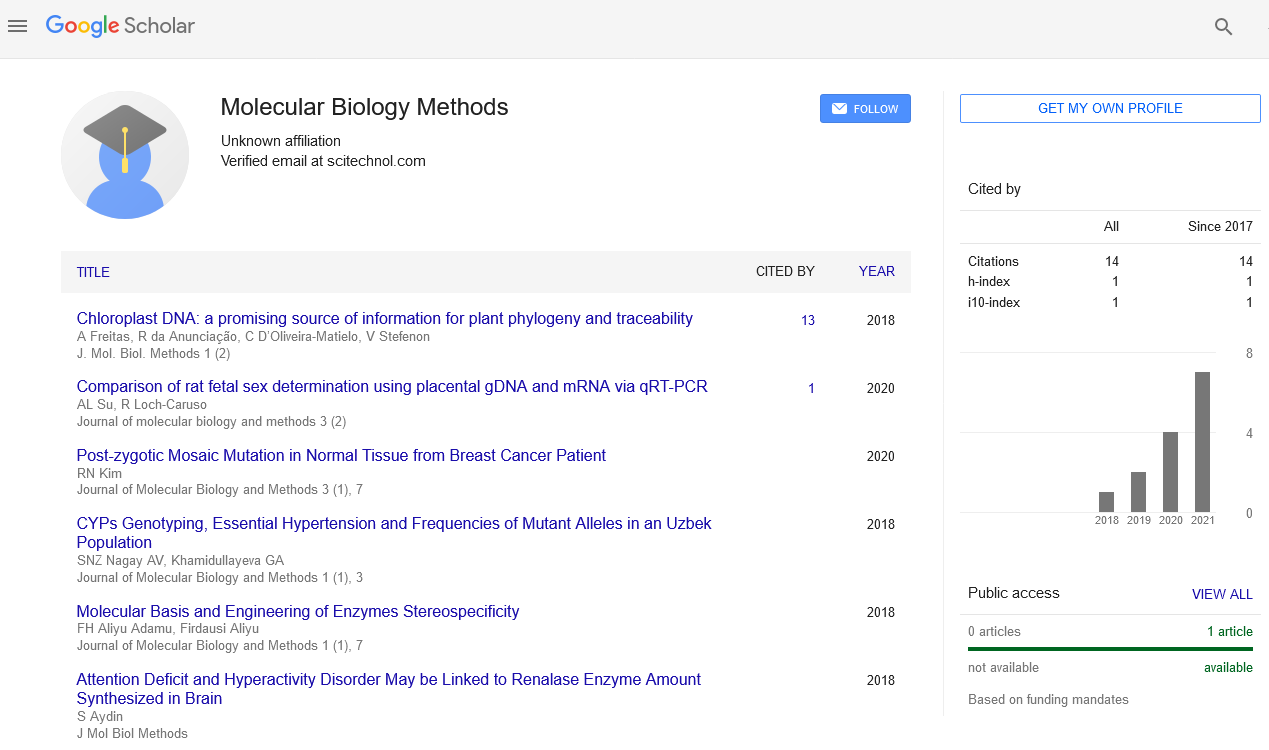Perspective, J Mol Biol Methods Vol: 4 Issue: 6
Carbon Dioxide Chemoenzymatic Starch Production without Cells
Gary Bassell*
Department of Life Science and Applied Chemistry, Nagoya Institute of Technology, Nagoya, Japan
- Corresponding Author:
- Gary Bassell
Department of Life Science and Applied Chemistry, Nagoya Institute of Technology, Nagoya, Japan
E-mail: gary.bassell@emory.edu
Received date: November 03, 2021; Accepted date: November 18, 2021; Published date: November 25, 2021
Keywords: Chemoenzymatic
Description
Many plants flip aldohexose from chemical process into polymers that type insoluble starch granules ideal for long-run energy storage in roots and seeds. Several researchers developed a hybrid system during which greenhouse gas is reduced to wood spirit by Associate in Nursing inorganic catalyst and so born-again by enzymes initial to 3 and 6 carbon sugar units and so to chemical compound starch. This artificial starch anabolic pathway depends on designed recombinant enzymes from many various supply organisms and may be tuned to supply amylose or amylopectin at wonderful rates and efficiencies relative to different artificial carbon fixation systems and, reckoning on the metric used, even to field crops [1].
Starches a storage sort of carbohydrates are significant supply of calories within the human diet and a primary feedstock for bio industry. We tend to report a chemical-biochemical hybrid pathway for starch synthesis from greenhouse gas and chemical element in an exceedingly noncellular system. The synthetic starch anabolic pathway, consisting of eleven core reactions, was written by procedure pathway style, established through standard assembly and substitution, and optimized by supermolecule engineering of 3 bottleneck-associated enzymes. in an exceedingly chemoenzymatic system with spatial and temporal segregation, ASAP, driven by chemical element, converts greenhouse gas to starch at a rate of twenty-two nanomoles of greenhouse gas per minute per weight unit of total catalyst, an 8.5 fold higher rate than starch synthesis in maize. This approach opens the approach toward future chemo biohybrid starch synthesis from greenhouse gas [2].
Genetics of Starch Synthesis
Enormous progress has been created in understanding the genetic science and organic chemistry of starch synthesis in crop plants. Moreover, starch remains at the terribly epicentre of the world's food and feed chains and has even currently become one in all the world's most significant sources of bio renewable energy. Yet, despite this outstanding progress and therefore the obvious economic importance, little or no has been achieved in terms of adding worth to starch or increasing starch yield, notably in cereal crops [3]. Here, the genetic science and organic chemistry of starch synthesis in crop plants, notably maize. With all this power in situ and a gap of chance ahead, the time is true to ascertain science deliver progress into a brand new frontier. Thus, in our read the stage is about for a brand new era of changes in starch synthesis, delivering enhancements in practicality and yield.
Starch Biosynthesis
Starch could be a carbon storage substance of plants assembled from alpha one, four linear glucan amylose and alpha one, branch glucan amylopectin. Plant starch isn't solely the biggest food resource, however is additionally a material for numerous applications, as well as biofuels, cosmetics, and medical mixture compounds [4]. Considering its numerous applications, amount and quality of created starch are equally necessary. Whereas the amylose and amylopectin production method within plant cells is part familiar, the starch formation method from those elements isn't totally understood, as evident within the obtainable metabolic network. Such incomplete information stops the understanding of the mechanism behind starch metabolism and impedes starch-related strain improvement. Consequently, information that may cause enhancing the standard and amount of plant starch is changing into progressively crucial, on condition that starch is a necessary food supply for a growing world population. Starch metabolism could be an extremely regulated method involving various enzymes and metabolites. The metabolic pathway of starch metabolism is complicated and includes numerous styles of cells that may be diminished into 2 categories chemical change cells and chemical process cells [5].
References
- Keeling PL, Myers AM (2010) Biochemistry and genetics of starch synthesis. Annu Rev Food Sci Technol 1: 271-303.
- Saithong T, Meechai A, Cheevadhanarak S, Bhumiratana S (2012) A formal path inference of starch biosynthesis via mathematical modelling of metabolic changes in excess carbon dioxide. J Comput Sci Syst Biol 5: 24-37.
- Abt MR, Zeeman SC (2020) Evolutionary innovations in starch metabolism. Curr Opin Plant Biol 55: 109-117.
- Li N, Zhang S, Zhao Y, Li B, Zhang J (2011) Over-expression of AGPase genes enhances seed weight and starch content in transgenic maize. Planta 233: 241-250.
- Bar-Even A, Noor E, Lewis N.E, Milo R (2010) Design and analysis of synthetic carbon fixation pathways. Proc Natl Acad Sci USA 107: 8889-8894.
 Spanish
Spanish  Chinese
Chinese  Russian
Russian  German
German  French
French  Japanese
Japanese  Portuguese
Portuguese  Hindi
Hindi 